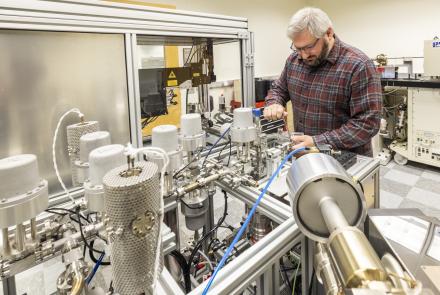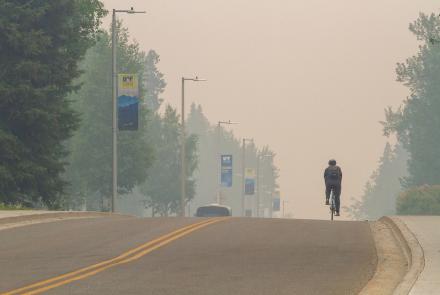An international team of researchers has launched a new open-access journal to support free global access to cutting-edge seismological research. The journal, Seismica, also will not charge scientists a publication fee.
Seismologist Ezgi Karasozen of the University of Alaska Fairbanks Geophysical Institute is a member of Seismica’s team. Karasozen, a postdoctoral fellow, works at the Alaska Earthquake Center, a facility of the Geophysical Institute.
“A researcher doesn’t have to pay anything to get published in Seismica. The copyright remains with the researcher. And it’s open access,” Karasozen said.
Seismica will publish peer-reviewed research in seismology, earthquake science and related disciplines. It is produced entirely by volunteers.
“We are putting a lot of time into this journal, but we feel strongly that it is something the seismology community needs,” Karasozen said.
Open-access journals, those that charge fees to publish papers but not to view them, are among the most costly for researchers. Some open-access journals have publication fees ranging from hundreds of dollars to $10,000 or more.
“This is especially a problem for researchers in developing countries, early-career researchers on small, personal fellowships and researchers between positions,” a 2021 report from Seismica reads. “Employers and funding agencies are increasingly requiring that research be published under an OA license, forcing authors to accept the high publication fees.”
Those researchers are not always financially supported, the report adds.
The idea for Seismica began nearly two years ago when a group of seismologists were motivated to address restrictive and expensive barriers to public and global access to research. More than 250 researchers from around the world, led by a core group of 44 editors, then launched the community-centered journal.
This initiative follows from a movement at other journals that specialize in volcanoes, tectonics and sediments.
Karasozen, who has been a member of the Seismica initiative since last year, said helping launch a new journal will break down the access barriers.
“I wanted to be a part of this because I’m concerned about the diversity, inclusion and equity problems in STEM fields, especially geosciences,” she said. “I was thinking about ways I can contribute to making geosciences more accessible.
“This is a good fit for me because I'm from Turkey, and I know the academic environment in my home country,” she said.
Karasozen moved to the United States more than a decade ago to obtain her master’s degree and Ph.D.
Christie Rowe, one of Seismica’s executive editors, talks about the journal in a YouTube video. She is also Canada Research chair in earthquake geology and associate professor at McGill University.
“The purpose is to take the outcome of research, whether publicly or privately funded, and make it available for the entire global community,” she says in the video. “Not just the research community, but policymakers, private sector — everyone who works with geophysics and seismology and earthquake science.”
Rowe said Seismica is not affiliated with any for-profit institution.
The journal also plans to provide author and reviewer workshops and to provide toolkits to help authors communicate their work outside of the scientific community, including traditional and online media.
Seismica has an ongoing call for reviewers to subscribe to the journal database, for volunteers to help run the journal and for scientists to submit their research. Anyone interested can register on the Seismica website.
Seismica is also on Twitter and Facebook.







